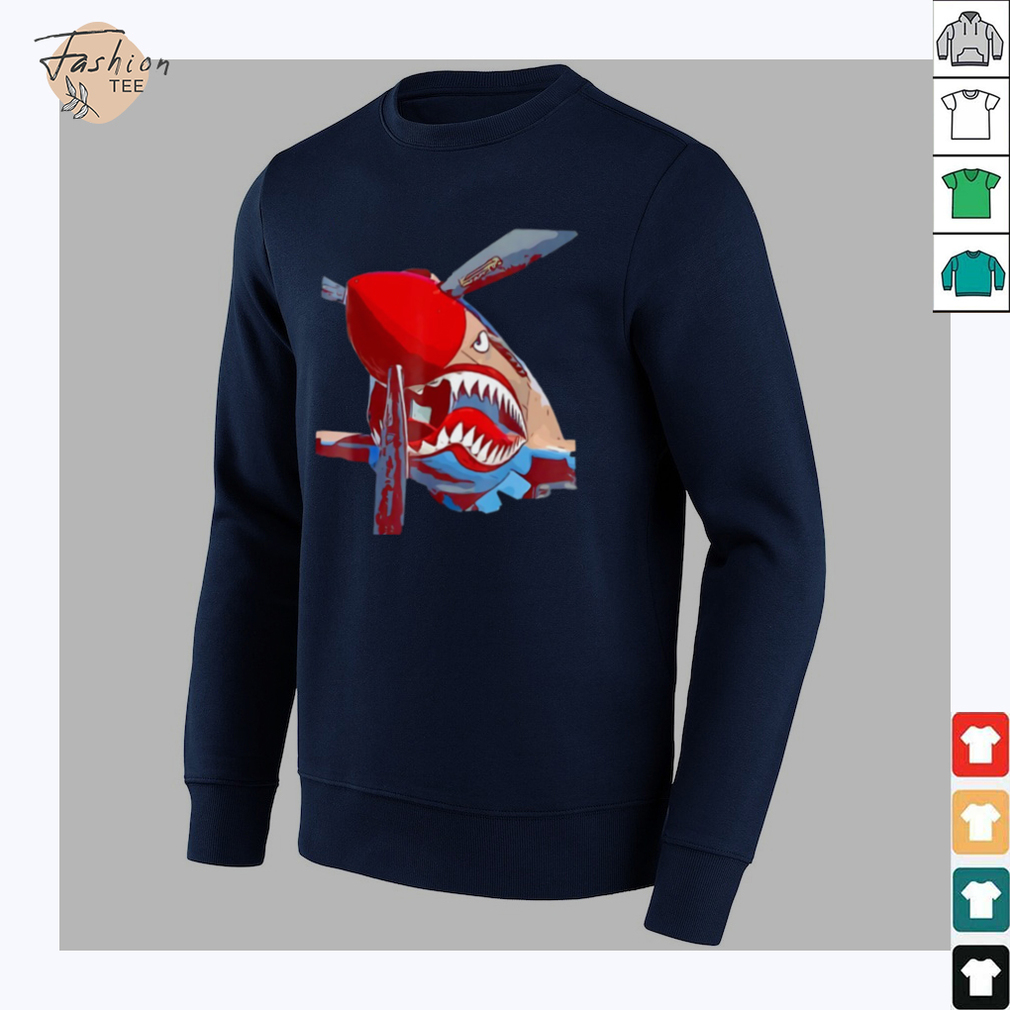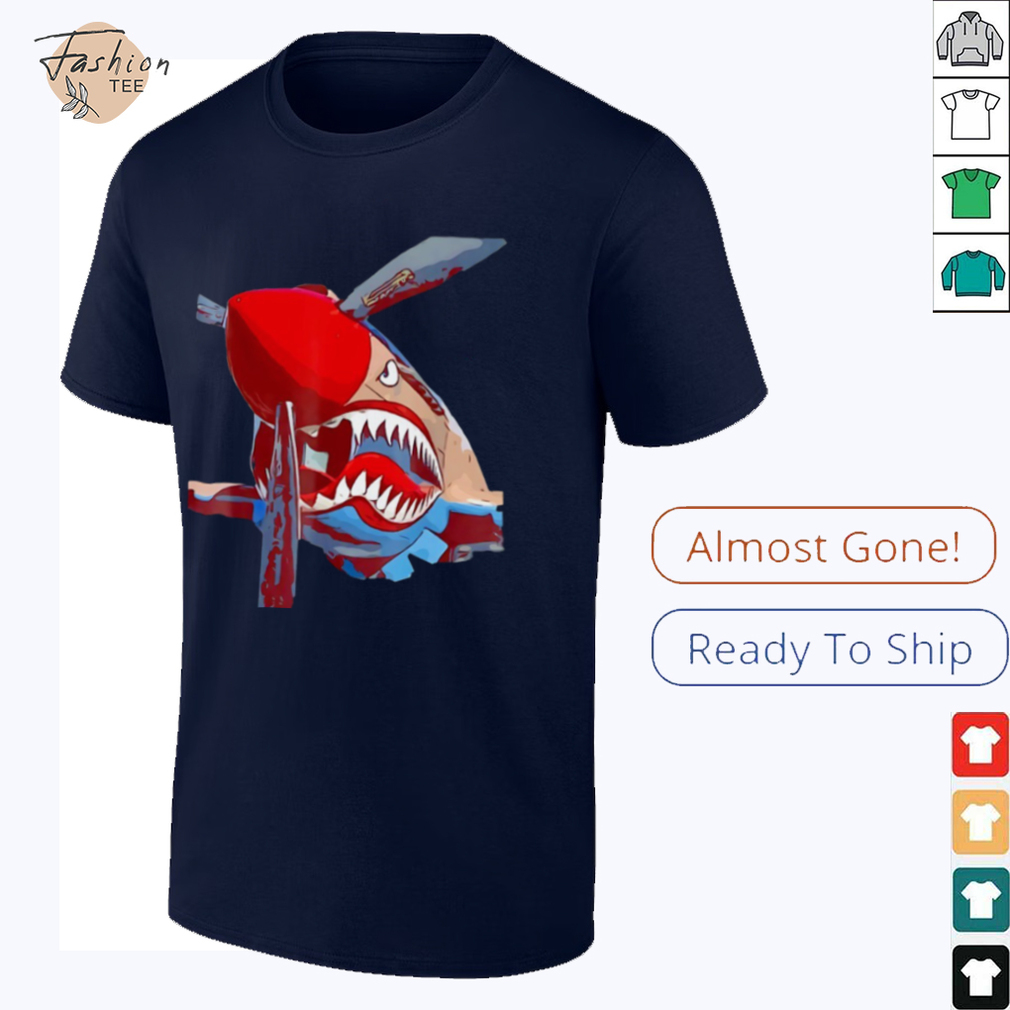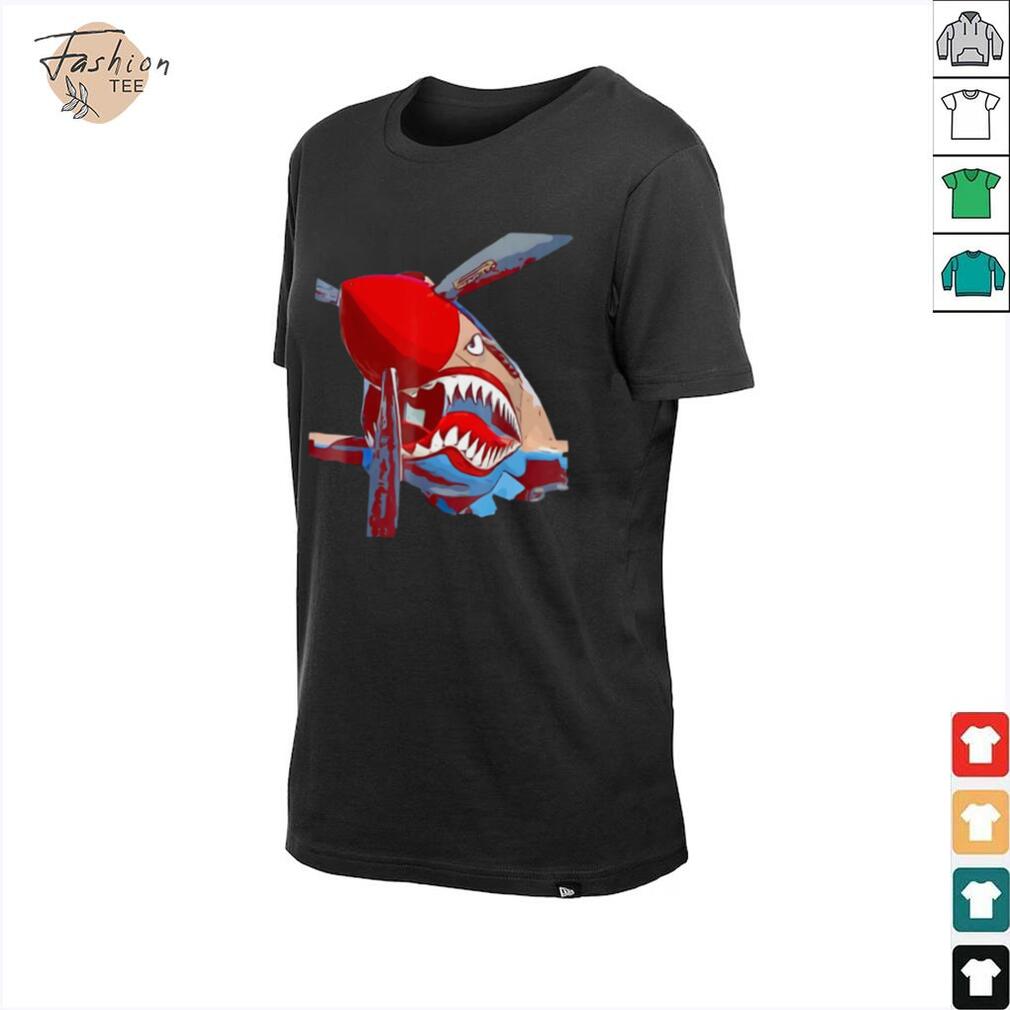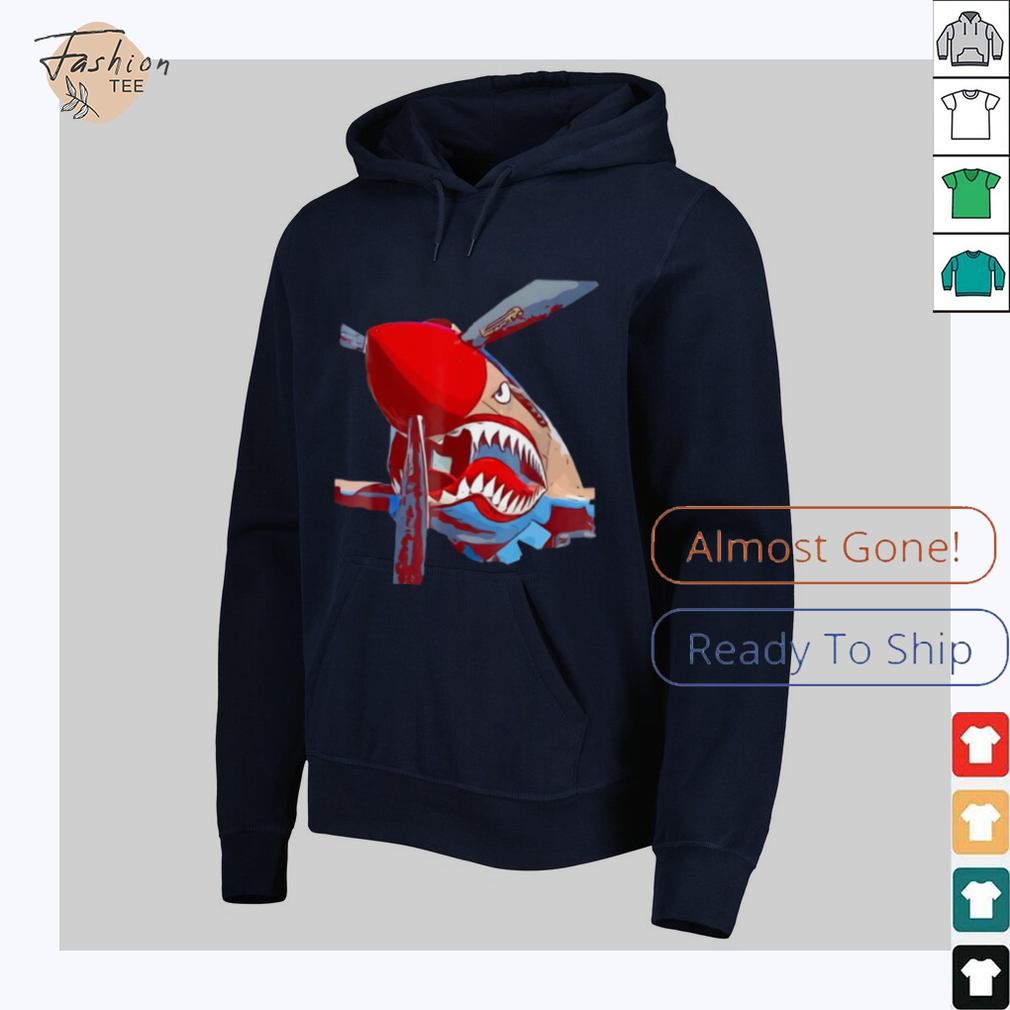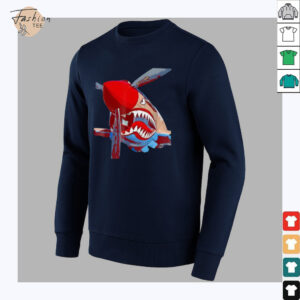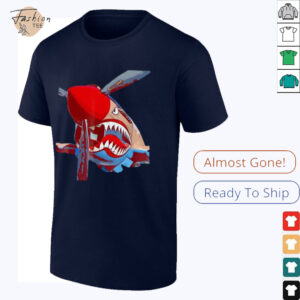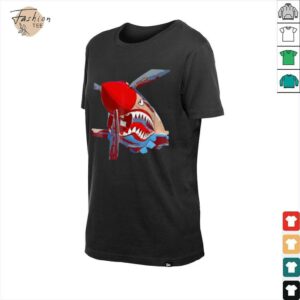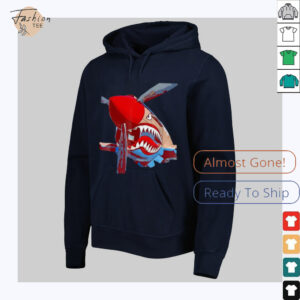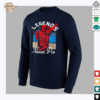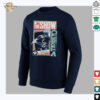Soar Through History: The “P-40 Warhawk Fighter Aircraft Shirt”
The “P-40 Warhawk Fighter Aircraft shirt” is a powerful tribute to one of World War II’s most iconic and recognizable warbirds, the **Curtiss P-40 Warhawk**. This **shirt** isn’t just clothing; it’s a piece of aviation history, celebrating the rugged design and courageous service of an **aircraft** that played a crucial role in multiple theaters of conflict. The **P-40 Warhawk**, first flown in 1938, was a single-seat, single-engine, all-metal fighter and ground-attack aircraft developed by Curtiss-Wright Corporation. Though often overshadowed by later, more advanced fighters like the P-51 Mustang, the **P-40** was indispensable during the early and middle stages of World War II, known for its robust construction and ability to withstand significant battle damage (Source: National Museum of the United States Air Force, Aviation History Online Museum). It was produced in massive numbers, with nearly 14,000 units built, making it the third most-produced American fighter of the war (Source: Boeing, Wikipedia – Curtiss P-40 Warhawk). Its distinctive shark mouth nose art, famously adopted by the American Volunteer Group (AVG), better known as the Flying Tigers, became one of the most recognizable symbols of Allied air power (Source: Smithsonian National Air and Space Museum). My personal commentary: there’s an undeniable allure to the P-40, a sense of gritty determination that makes it a true legend of the skies. But what made the **P-40 Warhawk** such a vital **fighter aircraft** despite its limitations, how did its iconic paint schemes come to define its legacy, and why does this **shirt** resonate with aviation enthusiasts and history buffs alike?
The P-40 Warhawk: A Workhorse of World War II Skies
While not the fastest or most agile **fighter aircraft** of World War II, the **P-40 Warhawk** was a critical workhorse that proved invaluable in diverse and challenging environments. Its robust construction made it highly durable and capable of operating from rough, improvised airstrips, a crucial advantage in the early days of the war (Source: National Museum of the United States Air Force). It was widely used by the air forces of 28 nations, including the American, British, Soviet, Chinese, Australian, and New Zealand air forces, seeing combat in North Africa, the Pacific, China-Burma-India Theater, and even the Eastern Front (Source: Imperial War Museums, Curtiss P-40 Warhawk). Despite often being outmatched by more nimble Axis fighters in high-altitude dogfights, the **P-40** excelled in low-to-medium altitude combat and ground attack roles, proving effective against ground targets and slower bombers (Source: Air & Space Magazine). Its heavy armament, typically six .50 caliber machine guns, provided formidable firepower. This reliability and versatility, even in the face of superior adversaries, made the **P-40** a true testament to Allied ingenuity and pilot skill. This **shirt** celebrates the enduring legacy of this less-celebrated but vitally important **fighter aircraft**. For another product that captures dynamic performance, consider the The Show Corbin Carroll Arizona Diamondbacks MLB Baseball Cartoon shirt, which highlights agility in a different arena.
The Iconic Shark Mouth: Symbol of the Flying Tigers
The most enduring and recognizable image associated with the **P-40 Warhawk** is undoubtedly the iconic shark mouth nose art, famously adorned by the **American Volunteer Group (AVG)**, better known as the **Flying Tigers**. This distinctive design, inspired by British pilots who saw similar markings on RAF P-40s in North Africa, was applied to the AVG’s aircraft operating in China against the Japanese in 1941-1942 (Source: Smithsonian National Air and Space Museum, Britannica). The fierce, menacing shark teeth painted around the engine cowling, often combined with aggressive “eyes,” served not only as psychological warfare to intimidate enemy pilots but also as a morale booster for the Allied airmen. The Flying Tigers, under the leadership of Claire Lee Chennault, achieved remarkable success against superior numbers of Japanese aircraft, famously recording 297 confirmed aerial victories with only 14 losses in combat, solidifying the **P-40’s** reputation as a formidable fighter (Source: National WWII Museum, The Flying Tigers Association). The shark mouth became synonymous with their courage and tenacity, making the **P-40** instantly recognizable and a symbol of Allied defiance in the early stages of the war. This **shirt** proudly displays this legendary livery, connecting wearers to one of the most celebrated units in aviation history. If you like to zoom in this way, you can almost see the glint in those painted eyes!
The Enduring Legacy of the P-40 in Aviation History
Decades after the end of World War II, the **P-40 Warhawk** continues to hold a significant place in aviation history and popular culture. While it may not have achieved the same level of fame as some of its contemporaries, its widespread use and crucial contributions in various theaters of war make it a true hero of the skies. The **P-40** was the first American fighter to be mass-produced with retractable landing gear, a testament to its advanced design for the era (Source: Air & Space Magazine). Its unique characteristics, including its ruggedness and the ability of its pilots to exploit its strengths against opponent weaknesses, have been highlighted in numerous historical accounts and documentaries (Source: HistoryNet, World War II Magazine). Today, surviving **P-40 Warhawks** are highly prized by collectors and regularly feature in airshows, where their distinctive silhouette and engine roar continue to captivate audiences worldwide. The presence of the **P-40** in museums globally, from the Smithsonian to regional aviation centers, underscores its enduring historical significance and its role in shaping aerial warfare. This **shirt** is a direct link to that powerful legacy, allowing enthusiasts to wear a piece of a truly heroic **fighter aircraft**. Here’s the part they didn’t tell you: many pilots developed deep affection for the P-40 due to its ability to bring them home even after taking heavy damage, earning it a reputation for toughness.
Command the Skies: Get Your P-40 Warhawk Shirt
The “P-40 Warhawk Fighter Aircraft shirt” is an ideal choice for aviation enthusiasts, history buffs, and anyone who appreciates the legacy of World War II’s iconic warplanes. This **shirt** celebrates the indomitable spirit of the **P-40 Warhawk**, a reliable and vital **fighter aircraft** that bravely served across the globe. With its distinctive imagery, perhaps featuring the famous shark mouth, it’s a stylish way to pay homage to a true legend of the skies. Wear it with pride and let the spirit of the **Warhawk** soar! For a closer look at this magnificent tribute to an aviation icon, revisit the P-40 Warhawk Fighter Aircraft shirt!
—
Follow-up Questions:
H3: Beyond the Cockpit: Unveiling the P-40’s Deeper Impact
- What specific design characteristics of the **P-40 Warhawk**, beyond its ruggedness, made it particularly effective in the challenging combat environments of the Pacific and North Africa?
- How did the unique operational challenges faced by **P-40** pilots, particularly those of the Flying Tigers, influence the development of air combat tactics during World War II?
- What less-known variants or experimental modifications of the **P-40 aircraft** existed, and how might they have altered its historical trajectory if mass-produced?
- Beyond the shark mouth, what other distinctive nose art or squadron markings adorned **P-40 Warhawks** flown by different Allied air forces, and what stories do they tell?
- How did the manufacturing process of the **P-40**, involving the Curtiss-Wright Corporation, contribute to its rapid and widespread deployment during the early stages of World War II?

